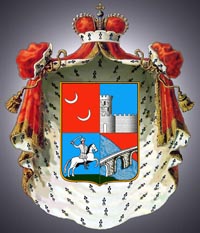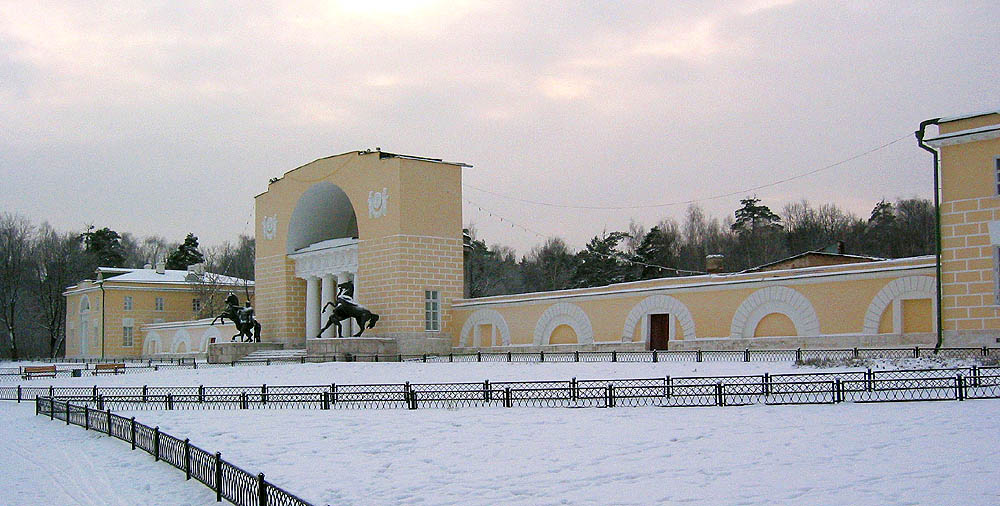|
Grigory Dmitriyevich Stroganov
Grigory Dmitriyevich Stroganov (russian: Григорий Дмитриевич Строганов) (25 January 1656 – 21 November 1715) was a Russian landowner and statesman, the most notable member of the prominent Stroganov family in the late 17th century-early 18th century, a strong supporter of the reforms and initiatives of Peter the Great. The surname is also transcribed as Stroganoff. Beef Stroganoff is named after this family. Grigory Stroganov was the only son of Dmitri Andreyevich Stroganov. His name first appears in the public record in 1672, when he visited Moscow with gifts for Tsar Alexei Mikhailovich on the occasion of the birth of Tsarevich Peter. Dmitiri Stroganoff died the next year and the tsar issued a ''gramota'' confirming Grigory's inheritance of one third of the Stroganov family fortune. When the heirs of Yakov Stroganov, the senior branch of the family, died off in 1681, Grigory inherited another one third of the Stroganov lands. The last third, owne ... [...More Info...] [...Related Items...] OR: [Wikipedia] [Google] [Baidu] |
Grigory Stroganov By R
Grigory, Grigori and Grigoriy are Russian masculine given names. It may refer to watcher angels or more specifically to the egrḗgoroi or Watcher angels. Grigory * Grigory Baklanov (1923–2009), Russian novelist * Grigory Barenblatt (19272018), Russian mathematician * Grigory Bey-Bienko (1903–1971), Russian entomologist * Grigory Danilevsky (1829–1890), Russian novelist * Grigory Falko (born 1987), Russian swimmer * Grigory Fedotov (1916–1957), Soviet football player and manager * Grigory Frid (1915–2012), Russian composer * Grigory Gagarin (1810–1893), Russian painter and military commander * Grigory Gamarnik (born 1929), Soviet wrestler * Grigory Gamburtsev (1903–1955), Soviet seismologist * Grigory Ginzburg (1904–1961), Russian pianist * Grigory Grum-Grshimailo (1860–1936), Russian entomologist * Grigory Gurkin (1870–1937), Altay landscape painter * Grigory Helbach (1863–1930), Russian chess master * Grigory Kiriyenko (born 1965), Russian fencer ... [...More Info...] [...Related Items...] OR: [Wikipedia] [Google] [Baidu] |
Serf
Serfdom was the status of many peasants under feudalism, specifically relating to manorialism, and similar systems. It was a condition of debt bondage and indentured servitude with similarities to and differences from slavery, which developed during the Late Antiquity and Early Middle Ages in Europe and lasted in some countries until the mid-19th century. Unlike slaves, serfs could not be bought, sold, or traded individually though they could, depending on the area, be sold together with land. The kholops in Russia, by contrast, could be traded like regular slaves, could be abused with no rights over their own bodies, could not leave the land they were bound to, and could marry only with their lord's permission. Serfs who occupied a plot of land were required to work for the lord of the manor who owned that land. In return, they were entitled to protection, justice, and the right to cultivate certain fields within the manor to maintain their own subsistence. Serfs were often r ... [...More Info...] [...Related Items...] OR: [Wikipedia] [Google] [Baidu] |
1656 Births
Events January–March * January 5 – The First War of Villmergen, a civil war in the Confederation of Switzerland pitting its Protestant and Roman Catholic cantons against each other, breaks out but is resolved by March 7. The Lutheran cantons of the larger cities of Zurich, Bern and Schaffhausen battle against seven Catholic cantons of Lucerne, Schwyz, Uri, Zug, Baden Unterwalden (now Obwalden and Nidwalden) and St. Gallen. * January 17 – The Treaty of Königsberg is signed, establishing an alliance between Charles X Gustav of Sweden and Frederick William, Elector of Brandenburg. * January 24 – The first Jewish doctor in the Thirteen Colonies of America, Jacob Lumbrozo, arrives in Maryland. * January 20 – Reinforced by soldiers dispatched by the Viceroy of Peru, Spanish Chilean troops defeat the indigenous Mapuche warriors in a battle at San Fabián de Conuco in what is now central Chile, turning the tide in the Spanish colonists favor in the ... [...More Info...] [...Related Items...] OR: [Wikipedia] [Google] [Baidu] |
Stroganov Family
The Stroganovs or Strogonovs (russian: link=no, Стро́гановы, Стро́гоновы), French spelling: Stroganoff, were a family of highly successful Russian merchants, industrialists, landowners, and statesmen. From the time of Ivan the Terrible () they were the richest businessmen in the Tsardom of Russia. They financed the Russian conquest of Siberia (1580 onwards) and Prince Pozharsky's 1612 reconquest of Moscow from the Poles. The Stroganov School of icon-painting (late 16th and 17th centuries) takes its name from them. The most recent common ancestor of the family was Fyodor Lukich Stroganov (died 1497), a salt industrialist. His elder son, Vladimir, became the founder of a branch whose members eventually became state peasants; this lineage continues. The lineage from Fyodor Lukich Stroganov's youngest son, Anikey (1488–1570), died out in 1923. Anikey's descendants became members of the high Russian nobility under the first Romanovs (tsars from 1613 onwards ... [...More Info...] [...Related Items...] OR: [Wikipedia] [Google] [Baidu] |
Meshchersky
Meshchersky (Russian: Мещерский) is a princely family whose title was recognized by the Russian Empire. Origin The family descends from the medieval independent rulers of the Meshchera tribe.Ruvigny, Marquis of (1914) ''The Titled Nobility of Europe'', London: Harrison and Sons, pages 1007–8. Their title of prince was confirmed by the Emperor Paul I of Russia on 30 June 1798. According to the Velvet Book of the 17th century, Bakhmet Husein, the Prince of Shirin, after some disagreement in the Great Horde (according to Dmitry Ilovaysky princes of Shirin had a disagreement with Tsar of the Great Horde), moved to Volga region and later conquered the land of Meschera in 1298.Igor Ermolaev. Rurikid. The past in persons (9–16th centuries). Biographic dictionary (Рюриковичи. Прошлое в лицах (IX—XVI вв.). Биографический словарь)'. OLMA Media Group, 2002. pp.96–97. . Dmitriy Ilovayskiy. History of the Duchy of Ryazan (Ист ... [...More Info...] [...Related Items...] OR: [Wikipedia] [Google] [Baidu] |
Saltern
A saltern is an area or installation for making salt. Salterns include modern salt-making works (saltworks), as well as hypersaline waters that usually contain high concentrations of halophilic microorganisms, primarily haloarchaea but also other halophiles including algae and bacteria. Salterns usually begin with seawater as the initial source of brine but may also use natural saltwater springs and streams. The water is evaporated, usually over a series of ponds, to the point where sodium chloride and other salts precipitate out of the saturated brine, allowing pure salts to be harvested. Where complete evaporation in this fashion was not routinely achievable due to weather, salt was produced from the concentrated brine by boiling the brine. Background Earliest examples of pans used in the solution mining of salt date back to prehistoric times and the pans were made of ceramics known as briquetage. Later examples were made from lead and then iron. The change from lead to iron ... [...More Info...] [...Related Items...] OR: [Wikipedia] [Google] [Baidu] |
Imperial Russian Navy
The Imperial Russian Navy () operated as the navy of the Russian Tsardom and later the Russian Empire from 1696 to 1917. Formally established in 1696, it lasted until dissolved in the wake of the February Revolution of 1917. It developed from a smaller force that had existed prior to Tsar Peter the Great's founding of the modern Russian navy during the Second Azov campaign in 1696. It expanded in the second half of the 18th century and reached its peak strength by the early part of the 19th century, behind only the British and French fleets in terms of size. The Imperial Navy drew its officers from the aristocracy of the Empire, who belonged to the state Russian Orthodox Church. Young aristocrats began to be trained for leadership at a national naval school. From 1818 on, only officers of the Imperial Russian Navy were appointed to the position of Chief Manager of the Russian-American Company, based in Russian America (present-day Alaska) for colonization and fur-trade developme ... [...More Info...] [...Related Items...] OR: [Wikipedia] [Google] [Baidu] |
Solvychegodsk
Solvychegodsk (russian: Сольвычего́дск, lit. "salt on the Vychegda River") is a town in Kotlassky District of Arkhangelsk Oblast, Russia, located on the right-hand bank of the Vychegda River northeast of Kotlas, the administrative center of the district. Population: History Solvychegodsk was founded in the 14th century on the shores of Lake Solyonoye. The locality was known as Usolye posad or Usolsk in the 15th century. Anikey Stroganov (1488–1570) began salt production in 1515, which later become a huge industry, and started the Stroganov family fortune. In the 16th–17th centuries, Solvychegodsk was a big commercial, handicraft, and cultural hub of Northern Russia. It was especially famous for its enamel industry. Solvychegodsk was captured and looted by Polish-Lithuanian vagabonds, the Lisowczycy, on January 22, 1613. In 1796, the town became a part of Vologda Governorate. It was also known as a place of political exile. In 1937, Solvychegodsk was tra ... [...More Info...] [...Related Items...] OR: [Wikipedia] [Google] [Baidu] |
Nizhny Novgorod
Nizhny Novgorod ( ; rus, links=no, Нижний Новгород, a=Ru-Nizhny Novgorod.ogg, p=ˈnʲiʐnʲɪj ˈnovɡərət ), colloquially shortened to Nizhny, from the 13th to the 17th century Novgorod of the Lower Land, formerly known as Gorky (, ; 1932–1990), is the administrative centre of Nizhny Novgorod Oblast and the Volga Federal District. The city is located at the confluence of the Oka and the Volga rivers in Central Russia, with a population of over 1.2 million residents, up to roughly 1.7 million residents in the urban agglomeration. Nizhny Novgorod is the sixth-largest city in Russia, the second-most populous city on the Volga, as well as the Volga Federal District. It is an important economic, transportation, scientific, educational and cultural center in Russia and the vast Volga-Vyatka economic region, and is the main center of river tourism in Russia. In the historic part of the city there are many universities, theaters, museums and churches. The city w ... [...More Info...] [...Related Items...] OR: [Wikipedia] [Google] [Baidu] |
Vlakhernskoye-Kuzminki
Vlakhernskoye-Kuzminki is an estate formerly belonging to the Stroganov and Golitsyn families of the Russian nobility. Today, it is incorporated into Kuzminki-Lyublino historical park located in Moscow's Kuzminki District. The estate was named after the Icon of Theotokos Vlakhernskaya, a replica of which was kept in the estate church. History In 1702 Peter the Great granted the estate to Grigori Stroganov. No buildings were erected on the property until after the death of the first owner in 1714. The new owner, Alexander Stroganov, began construction on the estate; in 1754 the estate passed to his widow. After the marriage of her daughter Anna in 1757 to Prince Mikhail M. Golitsyn (1731–1804), the property passed to the Golitsyn family. After the Revolution In 1917 the mansion was nationalized and given to the Institute of experimental veterinary medicine, which later became the All-Union Scientific Research Institute of Experimental Veterinary Medicine in Petrograd and ... [...More Info...] [...Related Items...] OR: [Wikipedia] [Google] [Baidu] |
Desiatina
A native system of weights and measures was used in Imperial Russia and after the Russian Revolution, but it was abandoned after 21 July 1925, when the Soviet Union adopted the metric system, per the order of the Council of People's Commissars. The Tatar system is very similar to the Russian one, but some names are different. The Polish system is also very close to the Russian. The system existed since ancient Rus', but under Peter the Great, the Russian units were redefined relative to the English system.Шостьин Н. А. Очерки истории русской метрологии XI – начала XX века. М.: 1975. Until Peter the Great the system also used Cyrillic numerals, and only in the 18th century did Peter the Great replace it with the Hindu–Arabic numeral system. Length The basic unit was the Russian ell, called the ''arshin'', which came into use in the 16th century. It was standardized by Peter the Great in the 18th century to measure exactly tw ... [...More Info...] [...Related Items...] OR: [Wikipedia] [Google] [Baidu] |




